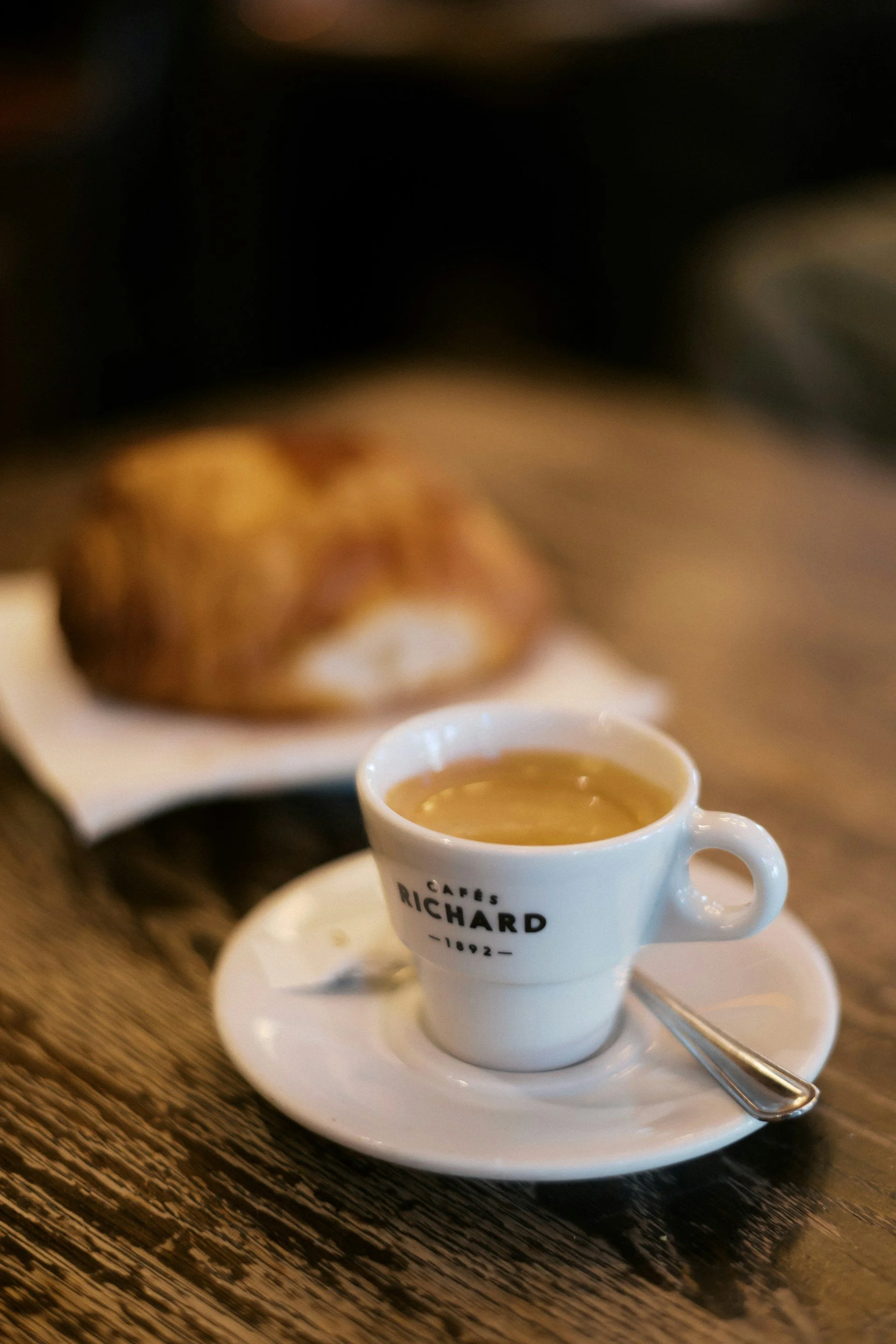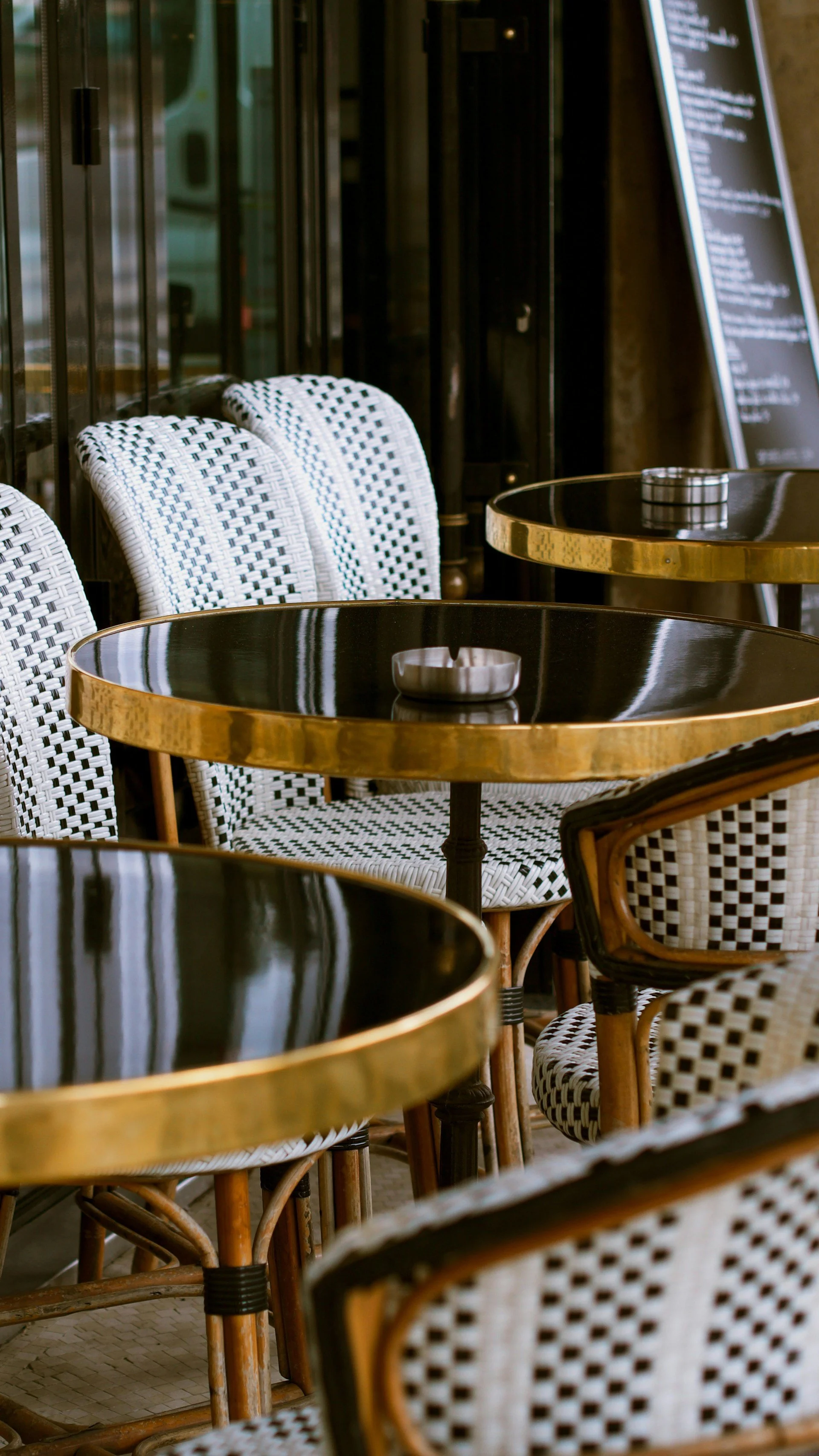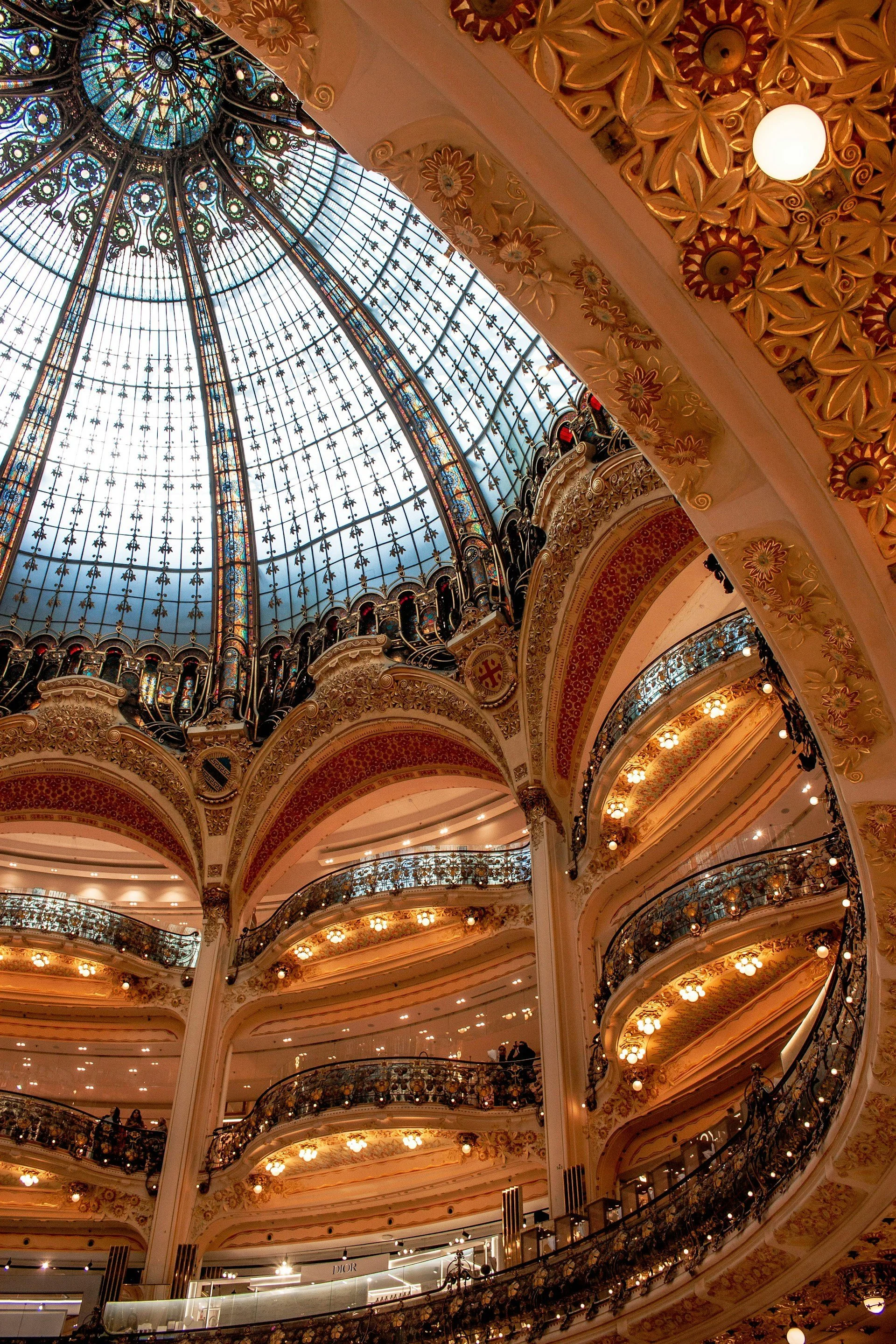How to Order Coffee in France
This blog post may contain affiliate links. I may earn a small commission for any purchases made through these links. Click here for the disclosure statement.
If you’ve ever been to France, you know there’s nothing better than sitting at a sidewalk café, partaking in some people-watching, all while sipping a cup of coffee. La belle vie. But while the love for coffee might be universal, ordering it isn’t.
Saying “un café, s’il vous plaît” won’t always get you what you expect, and with France’s particular coffee culture, it’s easy to get lost in translation.
Whether you’re fueling up before a day of sightseeing or simply soaking in café life, knowing how to order coffee in France can make your experience infinitely smoother.
I’ve been living in France for years now, and I still find myself explaining it every time American friends or family visit. So, consider this your cheat sheet for ordering coffee in Paris, Nice, or anywhere else in France like a local. I’ve also included a rundown of the French coffee drinks you’re likely to see at cafés and restaurants.
What You’ll Find on a French Coffee Menu
Ordering coffee in France can be daunting, especially if your French is limited. Before you ask for a café au lait or an iced coffee, it helps to know more about the types of coffee in France.
You shouldn’t expect a long list of syrups, milks, toppings, and other ways to customize your coffee (like you might find back home). In France, coffee is usually simple, often espresso with varying amounts of water and milk.
If you’re sitting on a traditional French café, here’s what you’ll typically see on the menu:
Café, Espresso or Café Noir
A shot of espresso (sometimes spelled expresso in France). While café literally means “coffee,” don’t expect a large drip coffee like in the U.S. Espresso is a daily ritual for many French people.
If you’re in Paris, you’ll see it served to patrons standing at the bar, where it’s cheaper than sitting on the terrace. It usually comes with a sugar packet or two to sweeten it.
Double Café or Double Espresso
Just as it sounds: a double shot of espresso.
Café Américain, Allongé or Americano
Espresso with extra hot water to dilute it. The strength of an américain or allongé depends on the number of espresso shots and the amount of water added.
This is the closest you’ll get to American-style coffee, and a safe bet if you like a milder brew. I always suggest it to my friends and family who are used to drinking black coffee back in the U.S.
Café Crème
Espresso with hot milk, topped with light foam. The closest equivalent to a cafe latte in France.
Café au Lait
Similar to a café crème but usually with a lot more milk and served in a bigger cup or even a bowl (yes, a bowl!). The French usually enjoy it at home for breakfast, though some cafés offer it as well.
Noisette
Espresso “stained” with a dash of cream. The French word "noisette" translates to hazelnut in English, but in terms of French coffee, it refers to the color, not the taste.
Cappuccino
More Italian than French, if you order a cappuccino, you’re likely to get a café crème but just with some cocoa powder sprinkled on top.
Café Décaféiné (Déca)
Decaf espresso, often enjoyed after lunch or dinner.
Café Gourmand
In French, “gourmand” means gourmet, but it can also describe someone who is fond of good food or informally, a foodie. And you definitely need to be somewhat of a gourmand in order to enjoy a café gourmand: a shot of espresso served alongside a few bite-sized desserts.
It’s perfect after dinner or as an afternoon treat. If you’re visiting France, I highly recommend you order one. They are often served at restaurants too.
Café Viennois
Espresso topped with whipped cream and a sprinkle of chocolate powder. It’s a bit more decadent than your average coffee.
Café Serré
A more concentrated espresso made with less water for a bitter, intense flavor.
What You Won’t Find in France
Forget the syrups (those are reserved for fruity sirops), tons of toppings, and a plethora of milk options. Unless you’re at a trendier coffee shop, you won’t find too many fancier concoctions like matcha lattes, flat whites, PSLs or frappucinos.
If you have dietary restrictions or dairy allergies, take note: almond, soy, oat, and even skim milk can be hard to find in France (particularly at traditional cafés and restaurants). Most milk-based drinks are made with plain whole milk by default.
Also don’t expect Splenda or Sweet’n Low, but a couple of sugar packets on your saucer. The French like their coffee strong, hot, and not too sweet.
Iced coffee isn’t popular here, so if you’re hoping for an iced latte or cold brew, you might be disappointed. On my very first trip to France, I ordered an iced coffee and ended up with a hot coffee served with ice cubes. So unless it’s clearly on the menu, it’s best to skip it.
How to Order a Coffee in French
Ordering coffee in French is easy, and it’s less about vocabulary, more about politeness. Etiquette is incredibly important in France, so never skip the s’il vous plaît when placing your order at a French café. Just like in any French restaurant or shop, start with a smile and a greeting:
“Bonjour, je voudrais un café, s’il vous plaît.”
(Hello, I’d like a coffee, please.)
Other phrases you’ll actually use:
“À emporter” – To go. Not every café offers takeaway, but many will serve a quick espresso or similar drink at the bar if you’re in a hurry. It’s also usually cheaper to drink it standing at the bar than sitting at a table. Specialty coffee shops are more likely to have takeaway cups.
“Sur place” – For here. Meaning you’ll be enjoying your coffee on-site, typically at a table or terrace.
Du lait – Milk
Sucre – Sugar
How to Enjoy Coffee Like the French Do
French coffee culture is truly special, and it’s really all about slowing down, sipping and savoring the entire experience. You won't see Parisians rushing with to-go cups on their way to work. Even when they’re in a hurry, it’s often a quick espresso at the bar, Italian-style.
If you’re visiting France, I highly recommend immersing yourself in this part of French life. Spend at least one afternoon at a café. Pause, chat, people-watch, and savor your coffee. It’s a uniquely European experience that’s well worth it (and one that you might miss when you’re back in the States)!
While coffee and donuts go hand-in-hand in the U.S., croissants and tartines are staples of the typical French breakfast. These go perfectly with your morning coffee.
Throughout the day, many locals enjoy their espresso with a small pastry. A café gourmand (espresso served with a few mini desserts) is another must-try while you’re in France. At many French cafés, a simple coffee often comes with a small cookie, like a speculoos, or a chocolate-covered almond!
The French also love their coffee with a cigarette in hand. Smoking is banned indoors, but many café terraces are shared with smokers. It’s part of the culture, so don’t be surprised if your neighbors light up.
Coffee in France is enjoyed morning, noon, and night, but if you need a mid-day pick-me-up around lunchtime, I recommend searching for a coffee shop rather than a restaurant café. Lunch tables are usually reserved for diners, so you may need to order a meal or enjoy your coffee standing at the bar.
After dinner, coffee is often served following the cheese course and before dessert, making for the perfect way to round out a meal.
What is your typical coffee order in France? (I’m a simple espresso girl). Let me know in the comments below.







